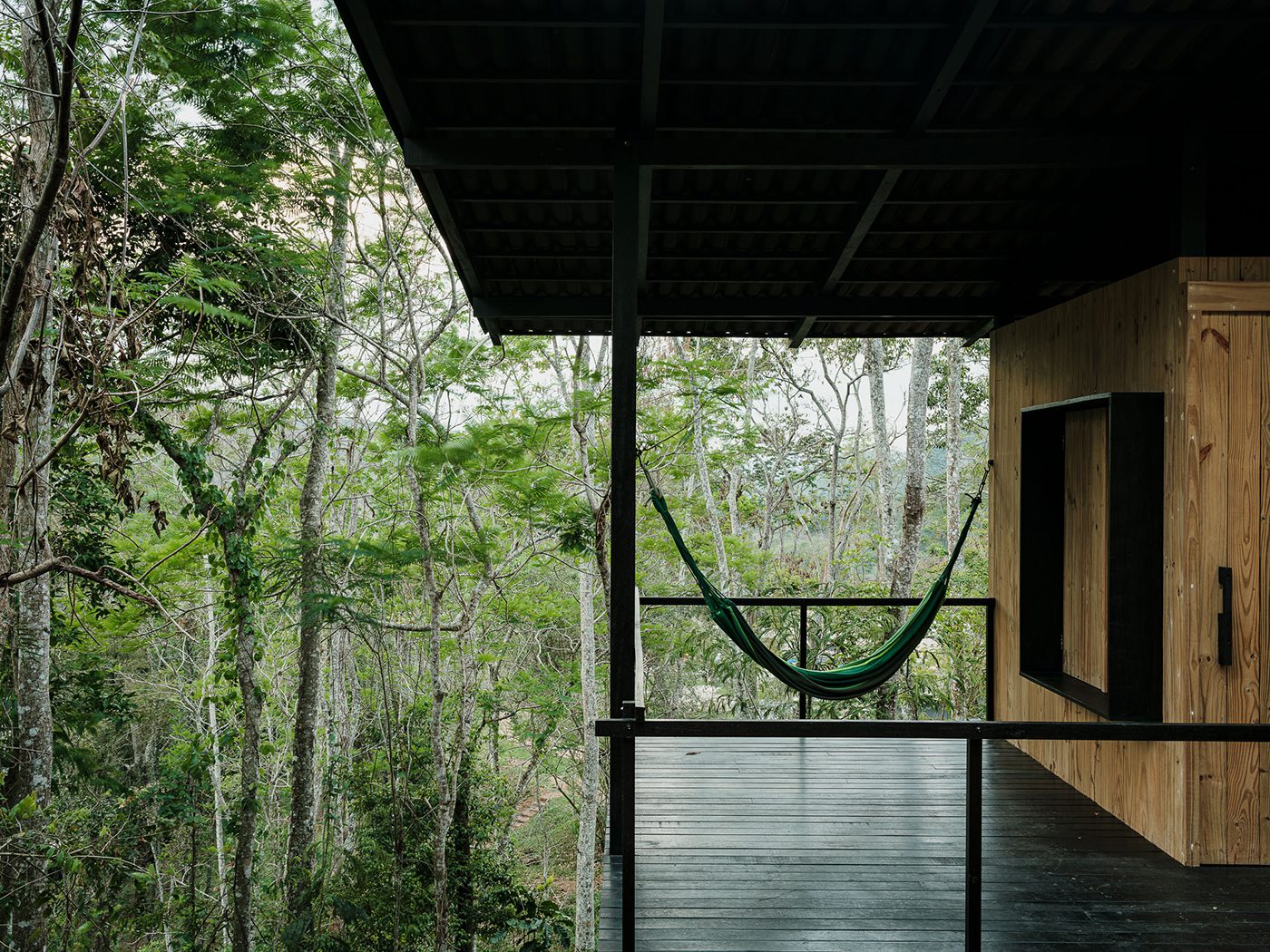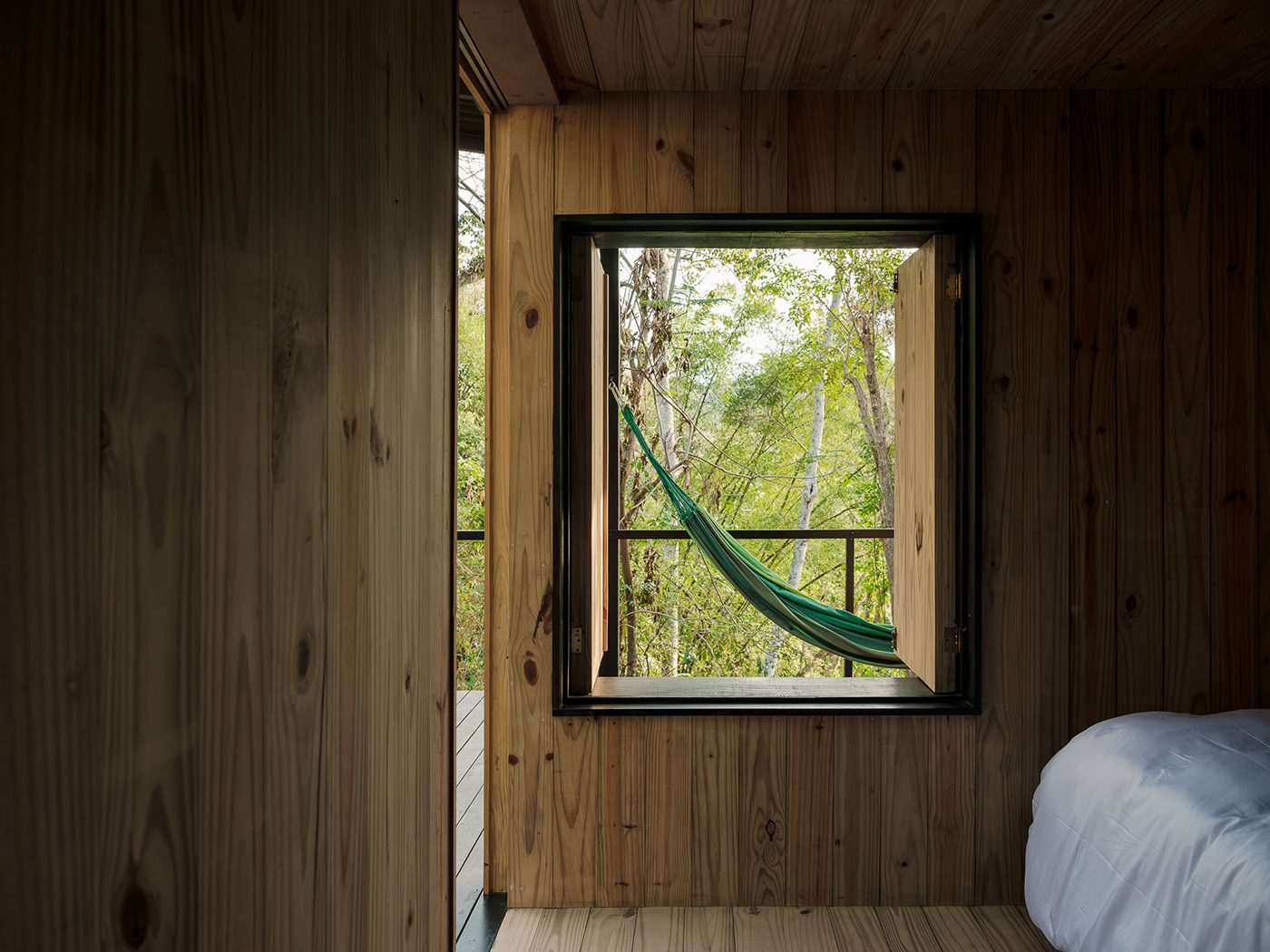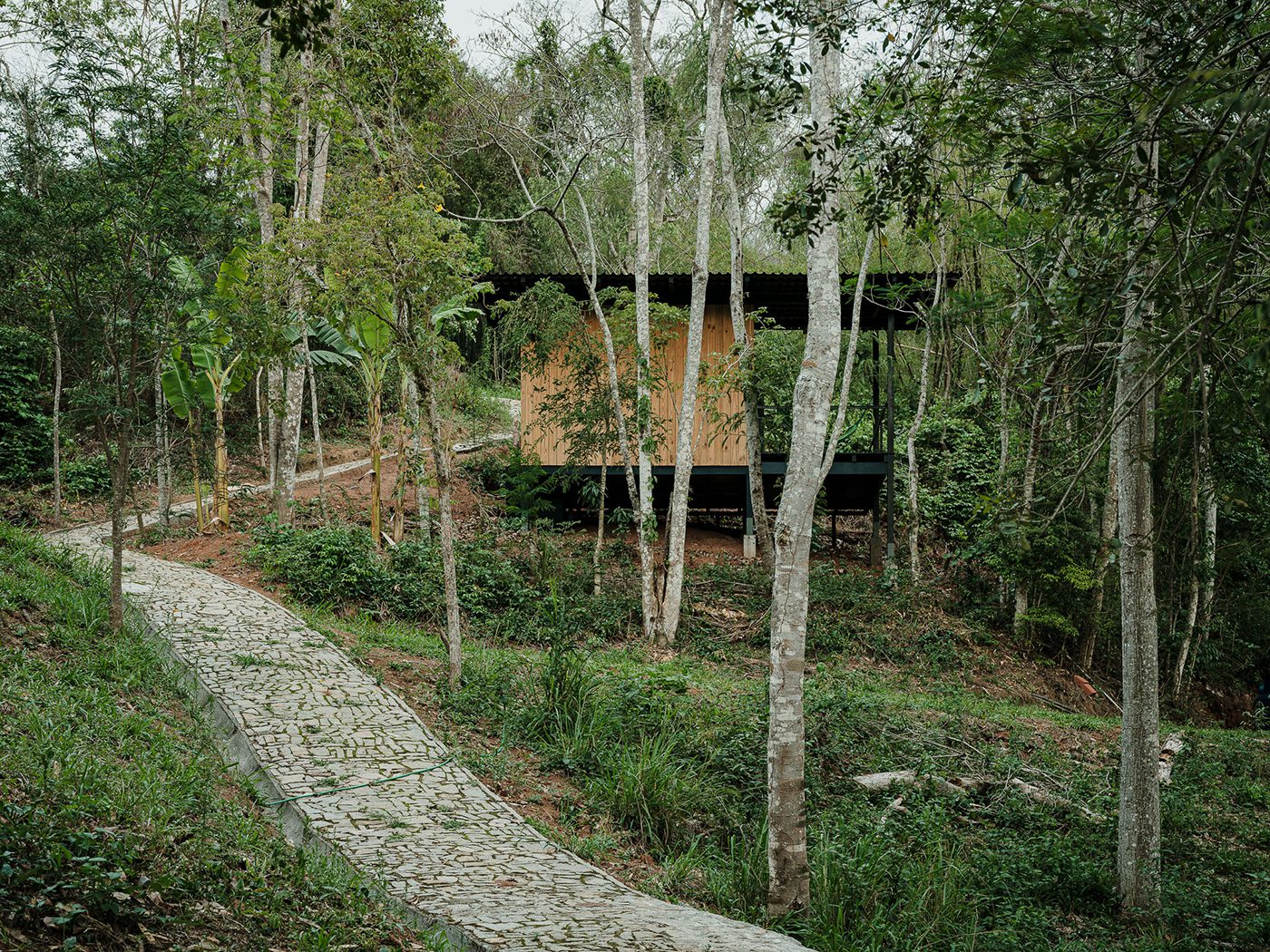Project implementation: Brazil
Project development: Brazil
Inhabiting the Landscape – A modular system for low-impact construction in remote environments
Context and Concept
Cabana Zero is the prototype of a series of 11 shelters designed for a spiritual retreat inspired by the indigenous traditions of the Peruvian Amazon. The proposal seeks simplicity, low impact, and a direct connection between the built space and nature. Located in the mountainous region of Rio de Janeiro, it combines a compact interior space and a dry bathroom, both clad in natural wood, intended for individual seclusion. In contrast, the darkened wooden veranda frames the landscape and intensifies the immersion in the forest.
Design and Construction
The structure rests on six 10x10 cm wooden pillars, echoing the slenderness of the neighboring trunks. Longitudinal and transverse beams, spaced every 1.20 m, define the 2.40 m cubic module of the interior space. A significant portion of the wood was reused from a pre-existing building on the site, reducing environmental impact and connecting the project to the local history. The enclosure features PET fiber insulation, and a secondary roof creates an air layer that reduces the thermal load. Elevated off the ground, the structure uses bolted metal connections and concrete footings, facilitating assembly and disassembly, and minimal disturbance to the site.
Autonomy and Ecology
The cabin operates off-grid: it has no electricity; waste is treated by composting toilets, and graywater is treated by banana tree circles, enriching the soil. The absence of mirrors and glass reinforces the contemplative approach and the disconnection sought during the retreat.
System and Impact
As the first example of a replicable system, the project was designed for hard-to-reach areas, allowing transportation and assembly by small teams without heavy machinery. This approach enabled the construction of 11 additional units in more difficult-to-access areas on the same site, validating the system's adaptability to different logistical and geographic conditions.




